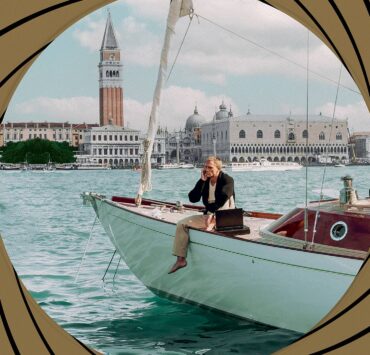The Orient Express celebrates 140 years with Accor
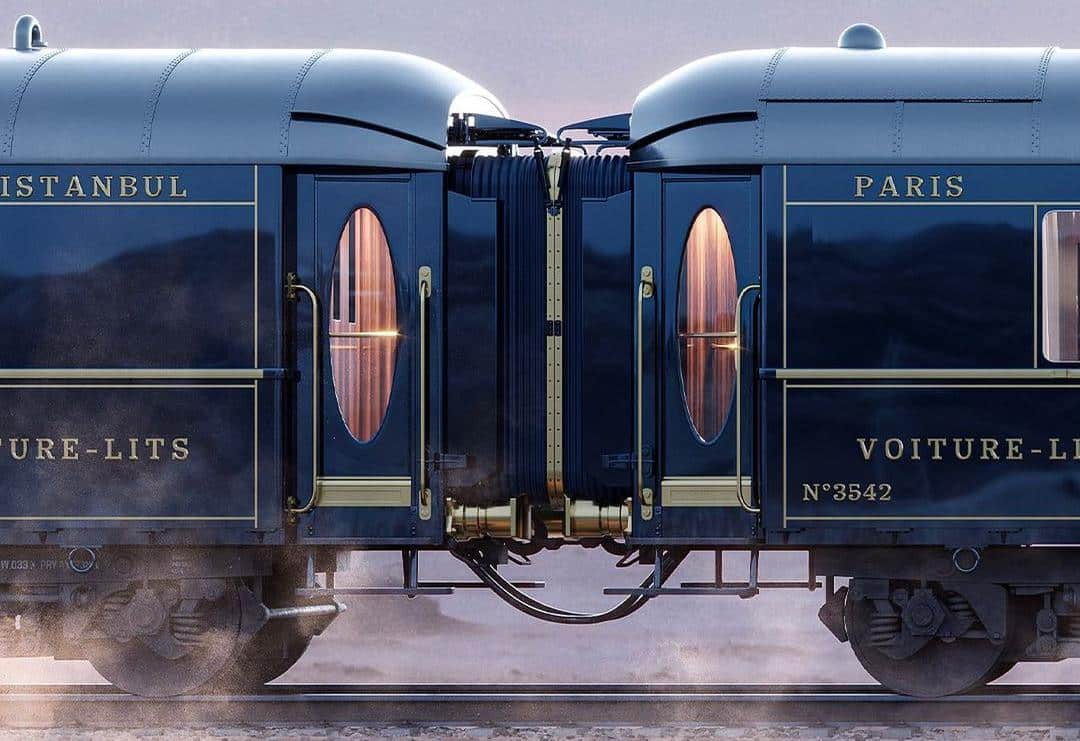
The Orient Express, the legendary train designed by visionary Georges Nagelmackers, celebrates its 140th anniversary today. An anniversary marked by a video celebrating its heritage and announcing its rebirth by 2024 under the leadership of SNCF and hotel giant Accor.
Elegant, comfortable and exclusive, the train nicknamed “the king of trains and the train of kings” has retained a special place in the collective unconscious. This cultural legacy is due as much to the destinations crossed as to the sumptuousness of its service and carriages, and to its legendary passengers from the worlds of literature and cinema.
While the Venice-Simplon-Orient Express has been owned by the LVMH group since 2019, the SNCF, owner of the “Orient Express” name, is preparing to put another train back on track, inherited from the disappointed Nostalgia-Istanbul-Orient-Express project.
In collaboration with hotel group Accor, the French rail group intends to restore the spirit of the 1883 luxury train, and even revive a route serving ancient Constantinople (now Istanbul).
Europe’s first luxury sleeper train
Descended from a large family of Belgian bankers, Georges Nagelmackers was totally fascinated by André Pullman’s “sleeping cars”, which he discovered during a visit to the United States.
Europe in the infancy of the Belle Époque was still unaware of comfort on rails, and seemed resistant to any idea of innovation. But at the same time, around 1860, luxury hotels were springing up all along the railroads.
The engineer is convinced that this golden age of travel, which saw the European elite (financial, cultural and diplomatic) gradually cross the vast world, needed cars that were reliable, comfortable and clean. Above all, crossing borders was often hazardous, if not dangerous.
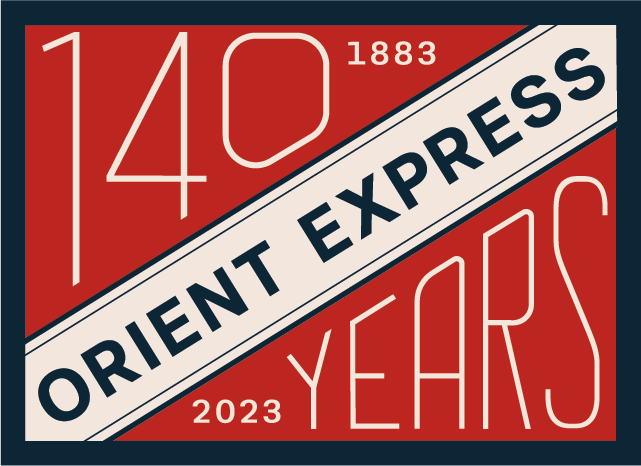
To achieve this level of excellence, Georges Nagelmackers wanted to duplicate all the comforts of the transatlantic liners on the railroads serving the Old Continent.
Without missing a beat, he asked André Pullman to become his partner, but he refused.
However, he had no intention of burying his project: to enable a wealthy clientele to cross Europe and reach the gates of the Orient. He has already mapped out the route, from Paris to Constantinople.
He recorded his idea in the book Projet d’installation de wagons-lits sur les chemins de fer du continent. But technical difficulties arose during the 1870 war between France and Prussia.
On his return home, he approached King Leopold II, a well-informed investor and great admirer of trains. Seduced by the idea, the King of the Belgians helped him sign agreements with the eight countries through which the train would pass.
In 1873, he was able to set up his own company, named “Georges Nagelmackers et Cie”, which soon became the Compagnie Internationale des Wagons-Lits (CIWL).
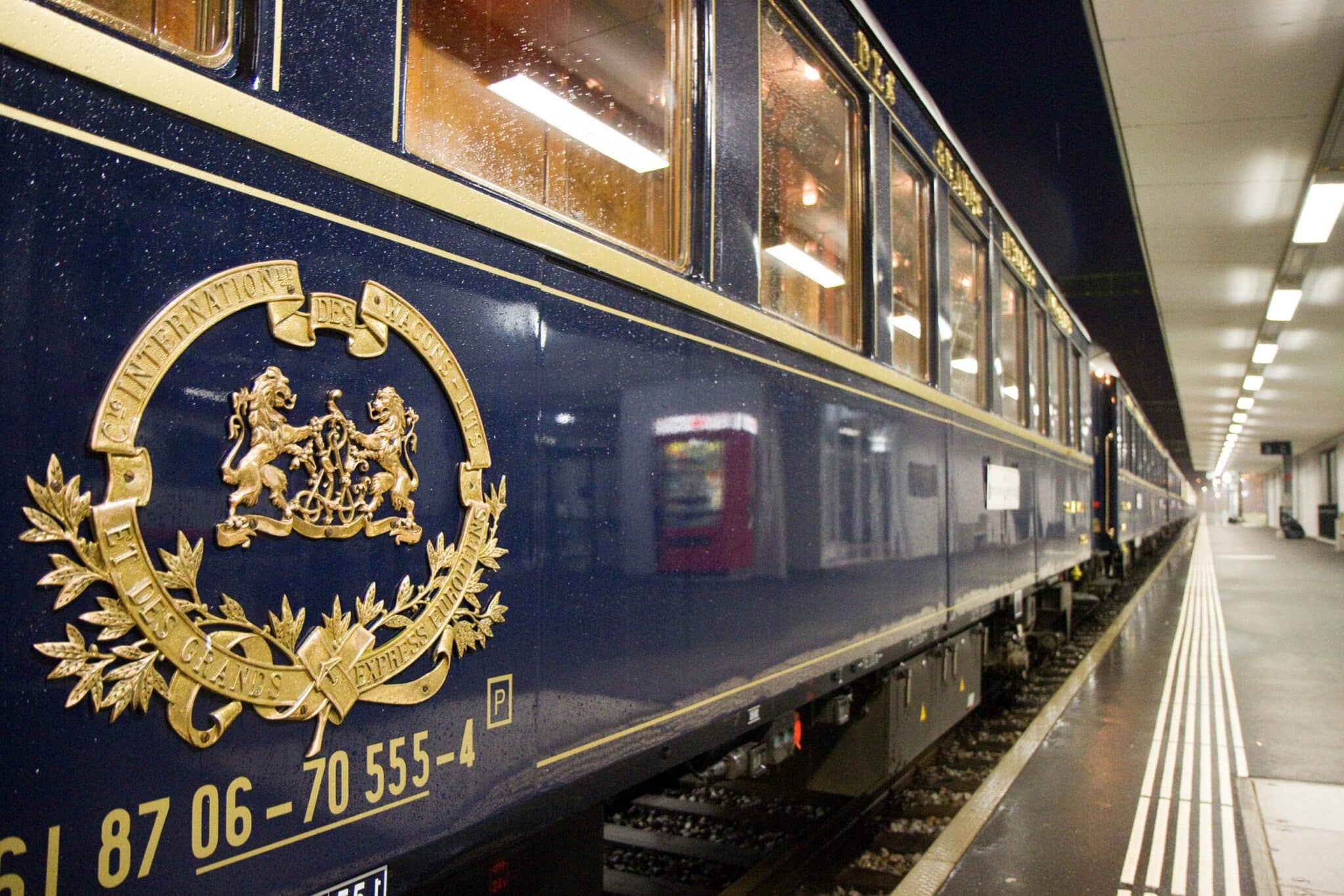
Initially, this company provided several railway companies with catering and accommodation services in the form of sleeping cars, lounge cars and restaurant cars.
However, in the wake of the creation of the Orient Express, the CIWL later adopted a new “extended” name: Compagnie Internationale des Wagons-Lits et des Grands Express Européens. A whole network of European luxury trains was born, including the Blue Train, Golden Arrow and Taurus Express.
A successful maiden voyage
On October 10, 1882 – a year before the inaugural departure of the Orient Express – Georges Nagelmackers invited a host of guests to try out his luxury Train Éclair. The train ran from Paris to Vienna.
This full-scale test offers a taste of the luxury that the first passengers on the Orient Express will be able to enjoy. On the menu: oysters, Italian pasta soup, turbot with green sauce, poulet chasseur, fillet of beef, game, salads, a farandole of pastries and, to top it all off, champagne and wines from Bordeaux and Burgundy.
But it was finally on October 4, 1883, that the train with its blue and gold teak carriages set off from the Gare de l’Est in Paris. On board, members of the press, the financial world and the entertainment world were amazed by the splendor of the service and the interior of the carriages.
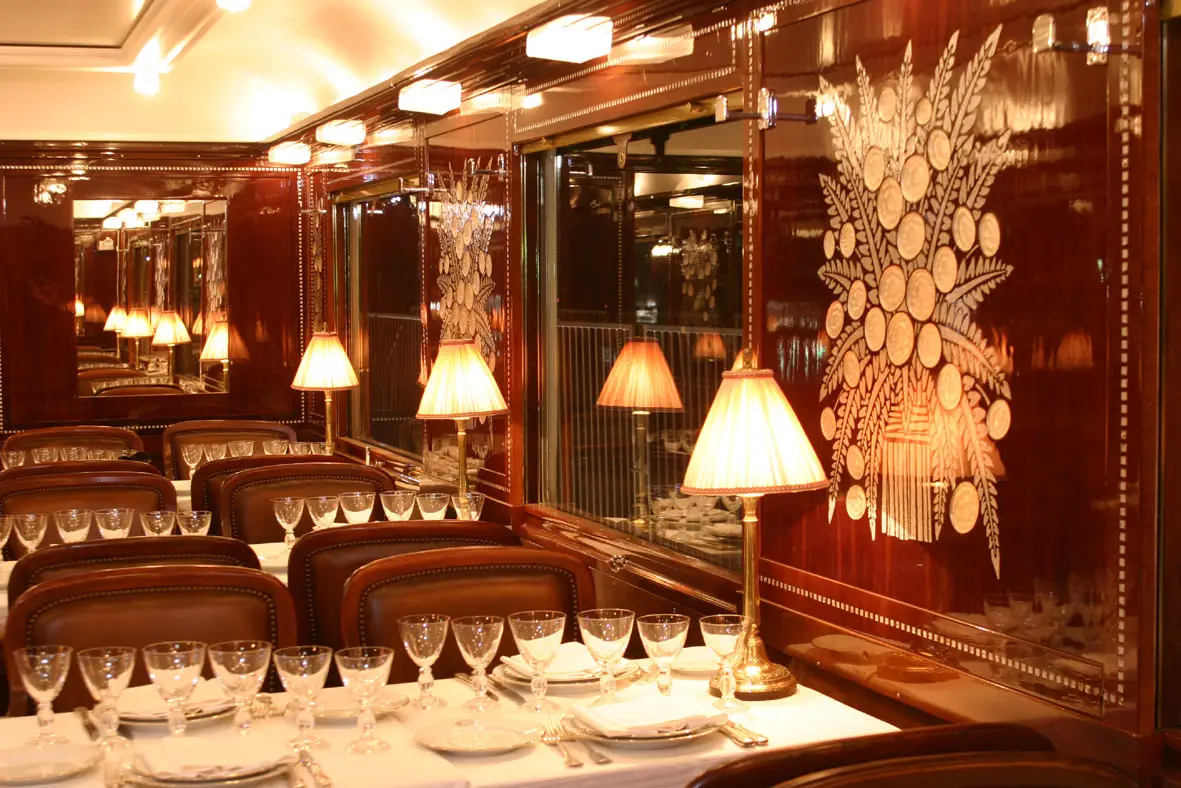
Their incredulous eyes discover tapestries from the Manufacture des Gobelins, mahogany woodwork and furniture, damask banquettes, velvet curtains, polished lamps and bronze faucets.
To offer a glimpse of French and European craftsmanship, Nagelmackers called on decorator René Prou and master cabinetmakers André-Charles Boulle, Riesener and Oeben.
The famous Art Nouveau glassmaker, Emile Gallé, even signed the lamps!
The train consists of three passenger cars, two sleeping cars, a dining car and two baggage cars.
Each car had state-of-the-art equipment for the time, including central heating, hot water and private bathrooms.
Refinement is also evident in the food.
The menu, presented in French and German, cost six francs, lunch four francs and a half-bottle of Moët & Chandon seven francs. At the time, champagne cost the equivalent of two days’ work for a coalminer.
The program included foie gras, caviar, roast beef, soufflés, cheeses and more.
This maiden voyage does not yet serve Constantinople directly, but its mythical route begins to take shape: Strasbourg, Munich, Vienna, Budapest and Bucharest. The journey lasts 81 hours 30 minutes and ends in the Romanian town of Giurgiu. For the rest, you need to take a second train from the Bulgarian station of Ruse, accessible by ferry to Varna. It was from this Bulgarian port that passengers finally arrived at the gates of the Orient, in the future Istanbul.

Six years later, the train finally served Constantinople directly, reducing its journey time to 67 hours and 35 minutes.
Such was its success that celebrities and writers flocked to enjoy the hushed, subdued atmosphere when night fell: from Coco Chanel to Leo Tolstoy, not forgetting Mata Hari, Lawrence of Arabia, Ernest Hemingway and Marlene Dietrich.
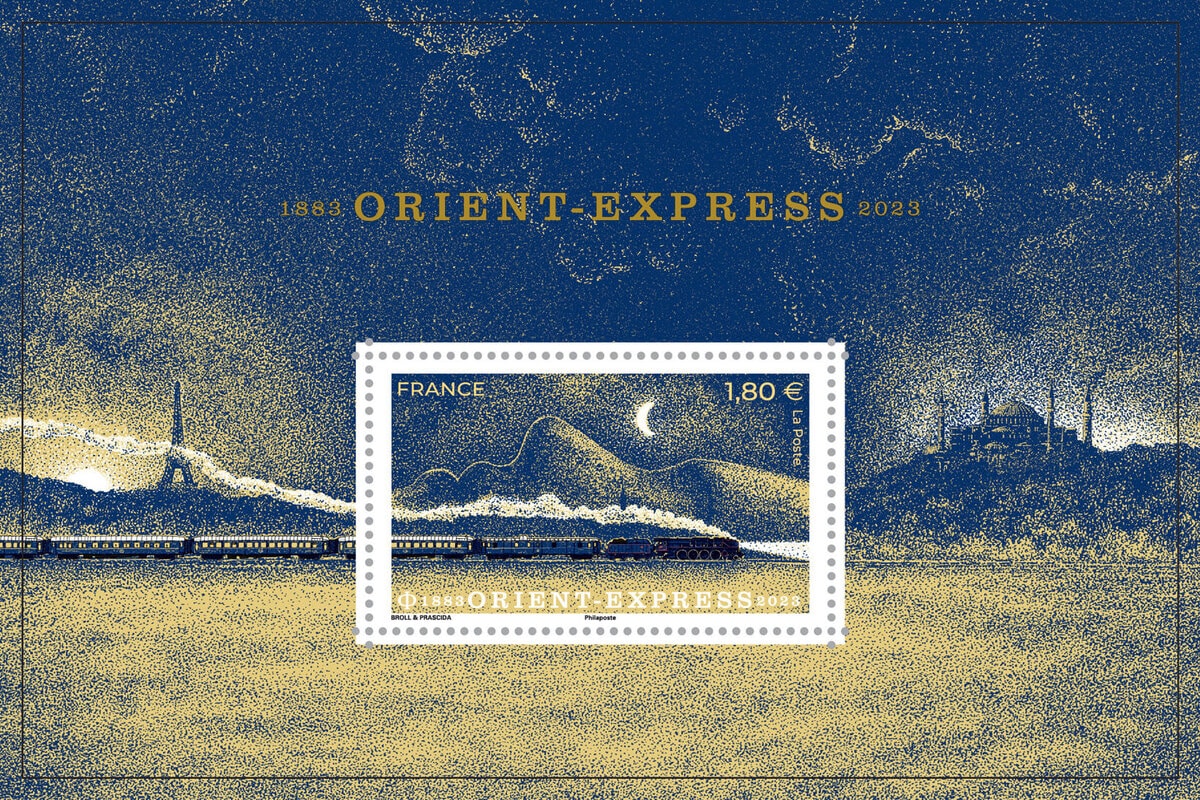
Steam, pitfalls and rebirth
But not everything was rosy for the Orient Express. The powder keg of the Balkans, through which the legendary train passed, was soon ignited and the First World War broke out. The company ceased operations, only to resume again in 1918.
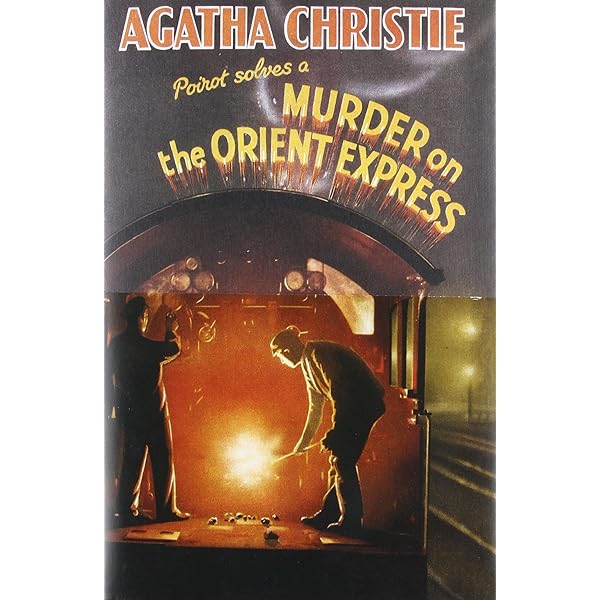
The reprieve was short-lived: poor weather conditions brought the train to a standstill time and again. Agatha Christie drew inspiration from one of these episodes to write her best-seller “The Crime of the Orient Express”, published in 1934.
Hatred of the Teutonic enemy and the opening of the Simplon tunnel enabled the new route to link Switzerland to Italy, avoiding Germany. Venice became the new stopover.

Finally, the Second World War broke out. When the clouds finally cleared, the golden age of travel was over, and border reopenings were particularly sporadic.
From then on, the Orient was no longer so easily accessible, and Nagelmackers’ great dream lost its lustre.

With the development of air travel, customers became scarce. The business survived until 1977, the date of the last trip.
American businessman James Sherwood wanted to revive the legend to help revive his run-down Hotel Cipriani in Venice. He found the opportunity to buy two Orient Express cars in a sorry state at an auction in 1977. Eventually, over a period of five years, he managed to get his hands on a further 17 cars from scrap dealers, gypsies and penniless collectors. In particular, he unearthed the only example of a forgotten art deco wagon, signed Lalique. This will be the Simplon-Venice-Orient-Express, running between Calais, Paris, Verona and Venice. In 2019, LVMH acquired it, operating it under the Belmond brand.
For its part, SNCF, owner of the “Orient Express” name, bought seven Pullman carriages from the Accor group and restored them in the legendary train’s colors.
In 2016, the discovery of an old train between Poland and Byelorussia – the Nostalgie-Istanbul-Orient-Express developed by tour operator Albert Glatt – revitalized the group’s plans to develop dinner tours, hitherto hampered by the financial crisis. There, SNCF historian Arthur Mettetal discovers 17 abandoned 1920-1930 period carriages, whose restoration is entrusted to decorator Maxime d’Angeac.
Originally scheduled for 2022, the train will finally be back on track in 2024, with the help of the Accor Group.
The SNCF’s aim is to restore all the spirit of the 1883 train, from the luxury of its richly decorated interiors to its original layout.
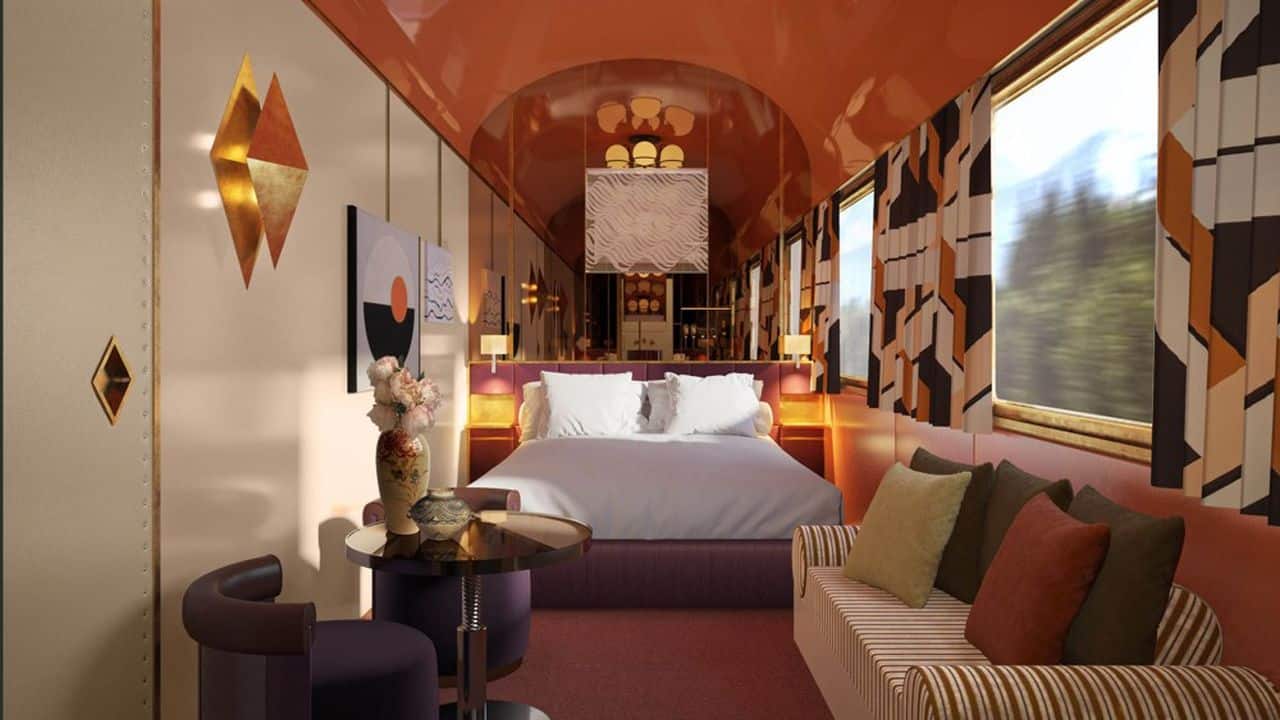
Cabins will give way to suites, including a presidential suite.
In the meantime, to celebrate the 140th anniversary of its maiden voyage, the Orient Express is reborn in a film that transcends the limits of time and space. A journey that eclipses the ordinary and promises unparalleled experiences beyond the realm of dreams.
Our 140th anniversary is not just a milestone, it’s a true testament to the adventurous spirit that has driven Orient Express for over a century,” says the CEO of Raffles & Orient Express. To celebrate this remarkable journey, we invite you to join us in imagining a future Beyond a world of dreams, where every moment celebrates life, travel and the tireless pursuit of the extraordinary.”
If patience is called for before seeing this myth from another time back on the rails, enthusiasts can already console themselves with a collector’s stamp by La Poste and the Orient Express Endowment Fund, and a Lego Idea set (scheduled for November 1, 2023, at a price of 299.99 euros).

For those who’d like to climb aboard right now, Parisian escape game The One (39 Rue de Palestro, Paris 2e) has recreated two fully paneled carriages for its unique experience Le Crime de l’Orient Express.
Read also > TRAVEL ON THE BELMOND TRAIN: TWO NEW SEASONAL JOURNEYS TO DISCOVER MALAYSIA
Featured Photo: © Orient Express
[EN] CLAIRE DOMERGUE, A SPECIALIST IN COMMUNICATION IN THE LUXURY SECTOR, HAS SURROUNDED HERSELF WITH EXPERTS TO CREATE THE FIRST MEDIA DEDICATED TO THE ECONOMIC NEWS OF LUXURY AND FASHION. THE LATTER DRAWS THE ATTENTION OF ITS READERS TO ALL THE MAJOR PLAYERS IN THESE SECTORS WHO SHARE THEIR EXPERIENCES, VISIONS AND KNOW-HOW. MORE THAN A SPECIALIZED WEBZINE, LUXUS PLUS IS A MULTI-SECTOR INFORMATION SYSTEM, WHICH HAS BECOME THE REFERENCE MONITORING TOOL FOR LUXURY AND FASHION PROFESSIONALS. OUR NEWSLETTERS CONTRIBUTE TO MAKE OUR READERS AWARE OF THE CHANGES AFFECTING THE LUXURY INDUSTRIES. THANKS TO AN INCREASED WATCH AND AN EXCELLENT KNOWLEDGE OF THE SECTOR, WE ARE INTERESTED IN THE MAIN ECONOMIC AND TECHNOLOGICAL STAKES OF FASHION, FINE WATCHMAKING, JEWELRY, GASTRONOMY, COSMETICS, PERFUMES, HOTELS, PRESTIGIOUS REAL ESTATE...********[FR] Claire Domergue, spécialiste de la communication dans le secteur du luxe, s’est entourée d’experts pour créer le premier média consacré à l’actualité économique du Luxe et de la mode. Ce dernier attire tout particulièrement l’attention de ses lecteurs sur l’ensemble des acteurs majeurs de ces secteurs qui y partagent leurs expériences, visions et savoir-faire. Plus qu’un webzine spécialisé, Luxus Plus est un système d’information multi-sectoriel, devenu l’outil de veille de référence pour les professionnels du luxe et de la mode. Nos newsletters de veille contribuent en effet à sensibiliser nos lecteurs aux mutations qui touchent les industries du luxe. Grâce à une veille accrue et à une excellente connaissance du secteur, nous nous intéressons aux principaux enjeux économiques et technologiques de la mode, la haute horlogerie, la joaillerie, la gastronomie, des cosmétiques, parfums, de l’hôtellerie, l’immobilier de prestige…



